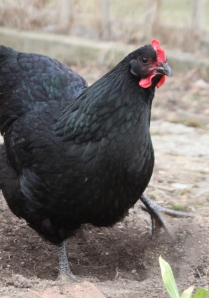
Discover how you can build Adirondack chairs like these by visiting This Old House
By Michael Leach
Putting the white Adirondack chairs on the cozy, brick-paved patio symbolizes spring for me, almost as much as sunny daffodils and fluttering kites in blue skies.
While a thorough cleaning remains to be done, these chairs already do nicely for breaks from the lengthy, early spring chore list. In recent years I’ve found that getting out of those chairs becomes harder and harder. Age isn’t the only factor.
I suppose Auntie Mame, the zany subject of a novel, movie and Broadway plays sums it up best, “Life is a banquet, and most poor suckers are starving to death.” For us green thumbs, substitute “The garden” for “life”. The suckers spend all their time nurturing their gardens rather than allowing the garden to nurture them.
Unlike some gardeners, who claim they can’t sit in their backyard Edens because they always see something to do, I learned to turn a blind eye. Only the area around the patio is regularly groomed. This allows me to use the space (weather permitting) whenever company comes, a break is needed, or I want to enhance morning coffee or something cool to sip in the evening. Patio time brings peace and pleasure, not a guilt trip.
This is why it’s important to consider garden furnishings as much more than decorative focal points or accents. Besides the patio, the maple-shaded picnic table and an aluminum reproduction of a cast iron Victorian bench beside the sycamore tree are frequently used in clement weather.
Granted, we gardeners are blessed. What many consider drudgery, we delight in. Letting go of weeds, watering cans, trowels, pruning shears and shovels isn’t easy because we derive intense pleasure from working among plants, tending the soil and keeping things tidy.
Too often, however, we obsess over details no one sees — unless we stupidly point them out. Those gorilla in the picture studies show it would take a thistle the size of King Kong before most guests will notice anything amiss in the perennial borders or vegetable beds. If yours is a reputation of plant nerd, they might compliment you on this towering horticultural achievement.
Dormancy is natural, going all the time isn’t. Not that I’m giving you permission to plop down for the rest of the season. Not hardly. A friend, who died last fall at 102 and gardened until well into her 90s, always advised, “Never let the rocking chair get you.”
She also recognized that rest is not a dirty, four-letter word.












 By Debra Knapke
By Debra Knapke

